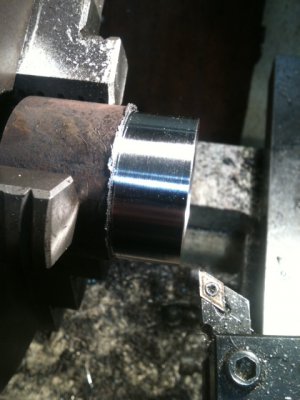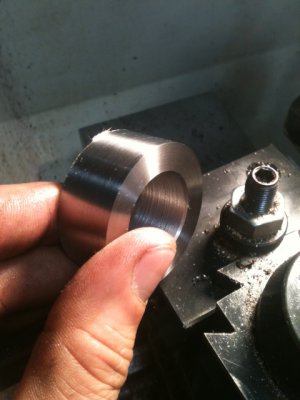- Joined
- Mar 21, 2013
- Messages
- 4,066
I need to order some steel round stock, probably from Online Metals. My friend recommended 10L18 as a good 'free machining' steel that is easy on the machine and cutters, and decent stock for most of my tinkering.
Are you talking more like 4130 or 4140? I am needing some of that too.
I don't have as much experience with HSS bits, but I did buy some pre-ground cheapies recently (see pic). I was taking a 10-15 thou cut on that stainless bar with one and it produced a very nice cut. Was afraid to take it any further on that stainless.
What do you consider a decent DoC on mild steel?
Are you talking more like 4130 or 4140? I am needing some of that too.
I don't have as much experience with HSS bits, but I did buy some pre-ground cheapies recently (see pic). I was taking a 10-15 thou cut on that stainless bar with one and it produced a very nice cut. Was afraid to take it any further on that stainless.
What do you consider a decent DoC on mild steel?
I'd like to see how deep a cut you can take using cold rolled mild steel and a sharp HSS cutter. I don't use stainless unless I have to on the kinds of things I like to make.
P.S.: brown chips are fine for carbide.



